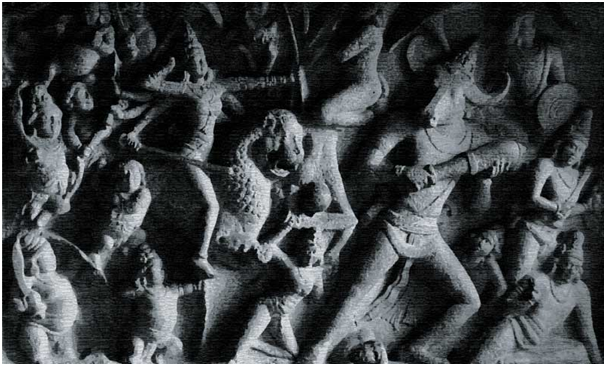The Many Narratives That Spell Diversity

In the current attack on Jawaharlal Nehru University one crucial aspect related to Indian mythology and its current interpretation came up to the fore. MHRD Minister Smriti Irani, while defending the actions of her government said that JNU is the den of anti national activities. Adding weight to her argument, she stated that the Dalit OBC groups in JNU are celebrating Mahishasura Martyrdom day and had issued a pamphlet, which is derogatory to the Goddess Durga. Goddess Durga worshipped by many as the slayer of Mahishasura.
The issue of interpreting the slaying of Mahishasura; who is projected as demon in narratives has been in the air for quite some time. Before the present unraveling of the issue came up recently, another controversy about Goddess had come up few years ago. In Parliament the issue related to IGNOU book mentioning Goddess drinking alcohol had come up. In response to this Pranab Mukherjee who at that time was a Union Minister quoted shlokas from scripture Chandi Path which describes the incident as to how the goddess drank once, and then again and again, in the midst of battle, her eyes bloodshot—as red as the rays of the rising sun.’
In 2014 the special issue of Forward Magazine (October) which was carrying the Bahujan understanding of Mahishasura and Durga was seized by the police on the complaint from some sections that this issue will precipitate the hatred between Brahmans and OBC’s. This matter is in the court at the moment. The celebrations of Durga Puja in its present form began not too long ago. Durga worship is dated 260 years ago. Nawab Krishnadev of Calcutta; after the Battle of Plassey in 1757 organized the first Durga Puja. This was to honor Lord Clive.
As such though there are communities which have been celebrating Mahishasura, its celebration as Martyrdom day came to the fore just a few years ago. From 2011 a group of students organized the celebration in JNU. Udit Raj, who has now joined BJP was also a speaker at one such program later on. Now one realizes that this celebration had been taking place amongst Adivasis communities in various places particularly in Bengal. Last year roughly over 300 such community festivals honoring Mahishasura had taken place. Many Bahujan scholars, including the one’s writing in Forward magazine issue have been arguing that the projection of slaying of Mahishasura is not in a good taste on two counts. One it celebrates death and the other it is the Brahmanical interpretation of the incident as Mahishasura is projected as the demon while he was a tribal king.
The interpretation of mythology is mired in numerous issues. The presentation of events cannot be accurate as this is a pre-Historical period and rigorous and usual tools of history cannot be applied easily. As such the dominant narrative is that the Goddess killed the demon and so this day is celebrated as a victory of good over evil. This version mentions that Lord Brahma, Vishnu and Mahesh had to come together and put together all their might to create Goddess Durga endowed with supreme powers as the demon was not easy to defeat. This narrative also presents the demon king as half man half buffalo.
Adding to what Irani read from the alleged leaflet in which Durga is said to be a sex worker who was commissioned to kill Mahishasur. She honeymooned with him for nine nights and then killed him in his sleep. One recalls that the city of Mysore is named after him. A friend brought to my notice about Tyeb Mehta’s painting from Kali series, showing the Goddess in deep embrace with Mahishasura, which sold for astronomical price.
As such the first mention of Durga comes in Markandey Purana, written somewhere around 250 to 500 AD. The popular celebrations and perceptions are in tune with what Irani is asserting and not much is known about the communities celebrating the same day as Mahishasura day. This has come to light in the so called mainstream only very recently, more so with these celebrations in JNU and the Forward magazine issue. I may add here that the dominant discourse is always of dominant castes/classes.
One must clarify that the very theory of race has been superseded by now and rather than arrival of Aryans or invasion of Aryans what seems more apt is the intermixing of communities over a period of time. One major dimension to Goddess Durga mythology is the gender aspect. Mrinal Pandey in her Scroll essay presents the issue as the one of assertion of women against the might of patriarchy. So the plate is full. There is race, there is caste and there is gender! In a society full of diversity where transition to egalitarian society is painfully slow, these multiple narratives should be part of the menu and compete with each other.
Irani-BJP-RSS are opposed to the coming up of subaltern narratives as it a threat to their hegemonic project, project of upper caste/upper class hegemony over the society. For them neither prevalent pluralism nor interpretations of dominated castes can be tolerated, so the super charged attack by MHRD minister in Parliament and equating the alternate version as undesirable-anti national.



